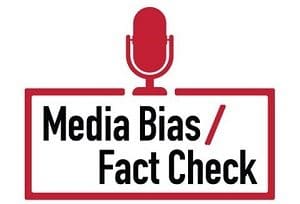LEAST BIASED
These sources have minimal bias and use very few loaded words (wording that attempts to influence an audience by appeals to emotion or stereotypes). The reporting is factual and usually sourced. These are the most credible media sources. See all Least Biased Sources.
- Overall, we rate the Institute for Women’s Policy Research Least Biased due to lack of loaded language and High for factual reporting based on evidence-based sourcing. We place them on the left side of the least biased due to the left-leaning policy issues they advocate.
Detailed Report
Bias Rating: LEAST BIASED
Factual Reporting: HIGH
Country: USA
Press Freedom Rating: MOSTLY FREE
Media Type: Organization/Foundation
Traffic/Popularity: Minimal Traffic
MBFC Credibility Rating: HIGH CREDIBILITY
History
According to their mission page: “The Institute for Women’s Policy Research advances women’s status through social science research, policy analysis, and public education. IWPR conducts and communicates research to inspire public dialogue, shape policy, and improve the lives and opportunities of women of diverse backgrounds, circumstances, and experiences. We are the leading think tank in the United States applying quantitative and qualitative analysis of public policy through a gendered lens.”
Read our profile on the United States government and media.
Funded by / Ownership
The Institute for Women’s Policy Research is a nonprofit funded through donations.
Analysis / Bias
In review, IWPR is an evidence-based source that does not use loaded words and presents information with low bias. All information presented is well sourced to credible media and government statistics. IWPR’s primary focus is on income inequality between men and women and minorities. They also advocate for more substantial reproductive rights through access to abortion and contraception. A factual search reveals that IWPR has never failed a fact check.
Failed Fact Checks
- None in the Last 5 years
Overall, we rate the Institute for Women’s Policy Research Least Biased due to lack of loaded language and High for factual reporting based on evidence-based sourcing. We place them on the left side of the least biased due to the left-leaning policy issues they advocate. (D. Van Zandt 3/20/2018) Updated (01/14/2022)
Source: https://iwpr.org
Last Updated on May 26, 2023 by Media Bias Fact Check
Do you appreciate our work? Please consider one of the following ways to sustain us.
or
Left vs. Right Bias: How we rate the bias of media sources


